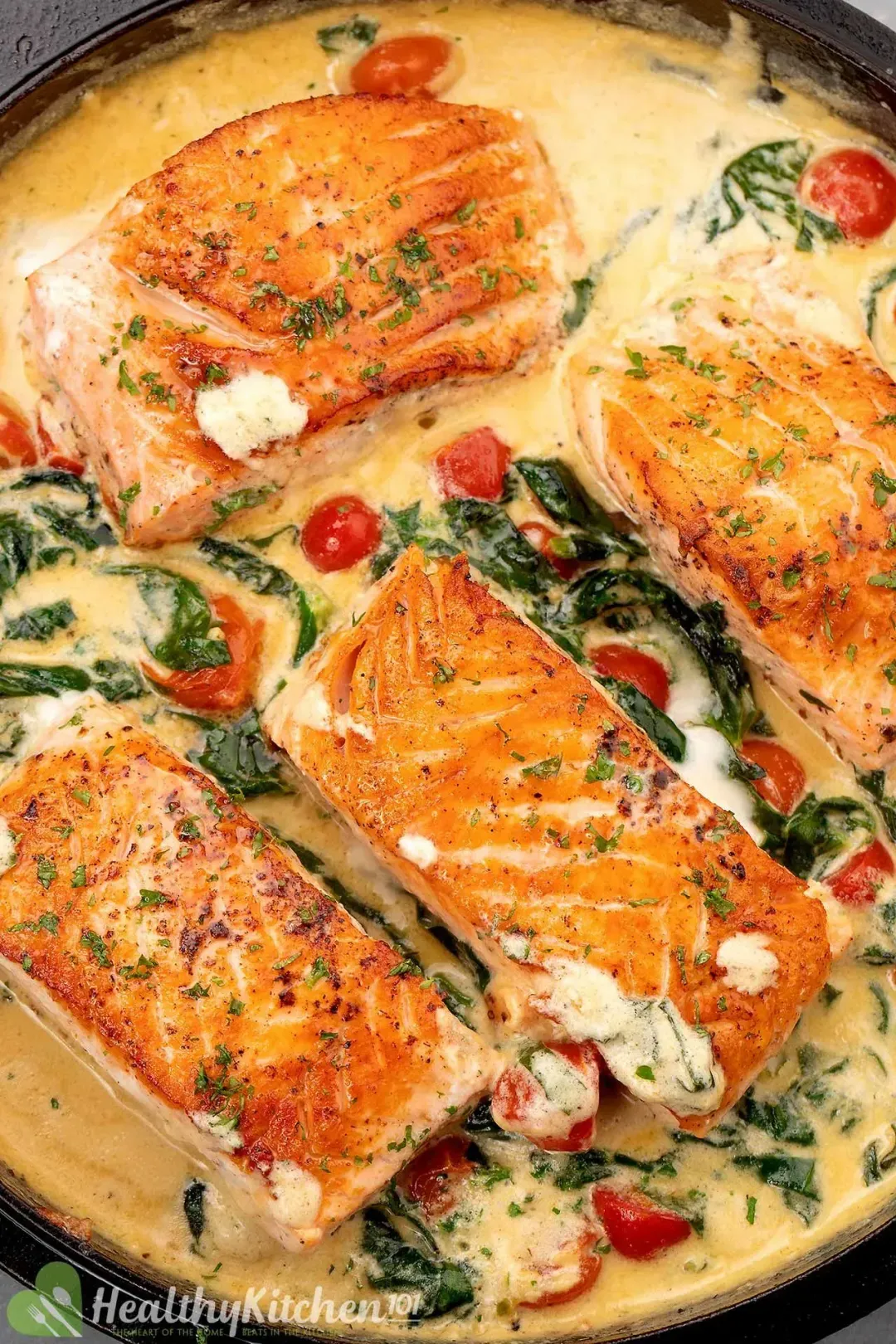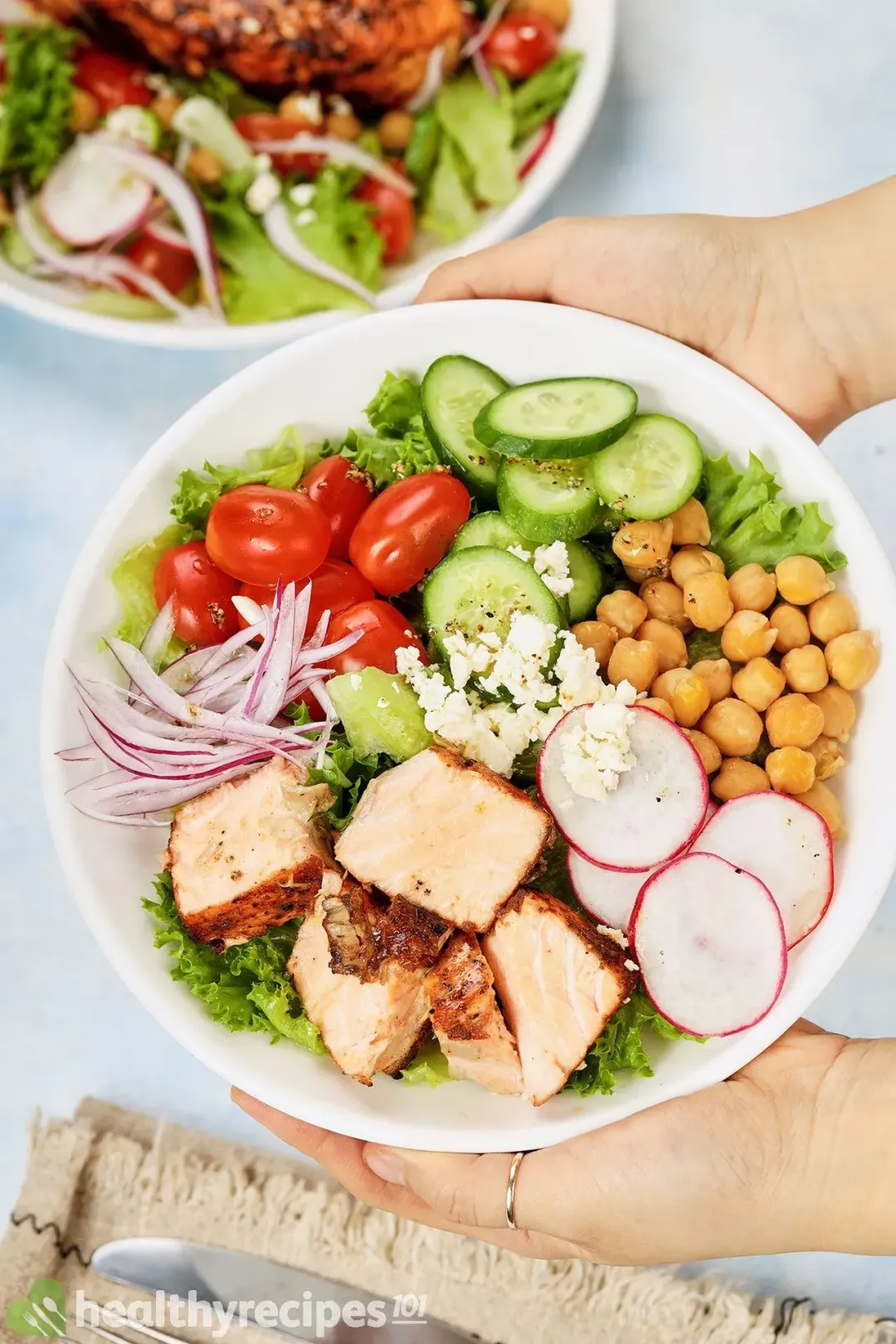Our collection of pan seared salmon recipes are here to help you cook up a storm. These recipes are sure to impress even the most picky eaters.
Salmon comes with a long list of health benefits and can be cooked in several ways. Today we’re focusing on pan-searing, the way top chefs do, as it creates the most beautiful flavor and texture.
The Difference Between Pan-Seared and Sauteed
The only similarity that these two methods share is that they both involve cooking ingredients in a pan on a stovetop.
Pan-searing is used for thick cuts of protein while sauteing is for smaller pieces of meat or vegetables.
Use high heat for pan-searing to help develop the crust and moderate heat for sauteing to avoid burning.
Searing doesn’t require moving the food (apart from the occasional turn), but sauteing often needs a lot of stirring.
Which Pan Is Best for Searing?
A cast iron skillet is the best option for searing. Once it gets hot, albeit slowly, cast iron has the best heat retention out of all other cookware materials.
Large stainless steel skillets are also suitable. Their heat retention isn't as good as cast iron, but they are lighter and don’t require as much experience.
Do not use non-stick pans for searing, because they aren't designed for high heat. Overheating may damage the pans and even let off toxic fumes.
Best Pan Seared Salmon Recipes
Get your pan ready and check out these tasty recipes!
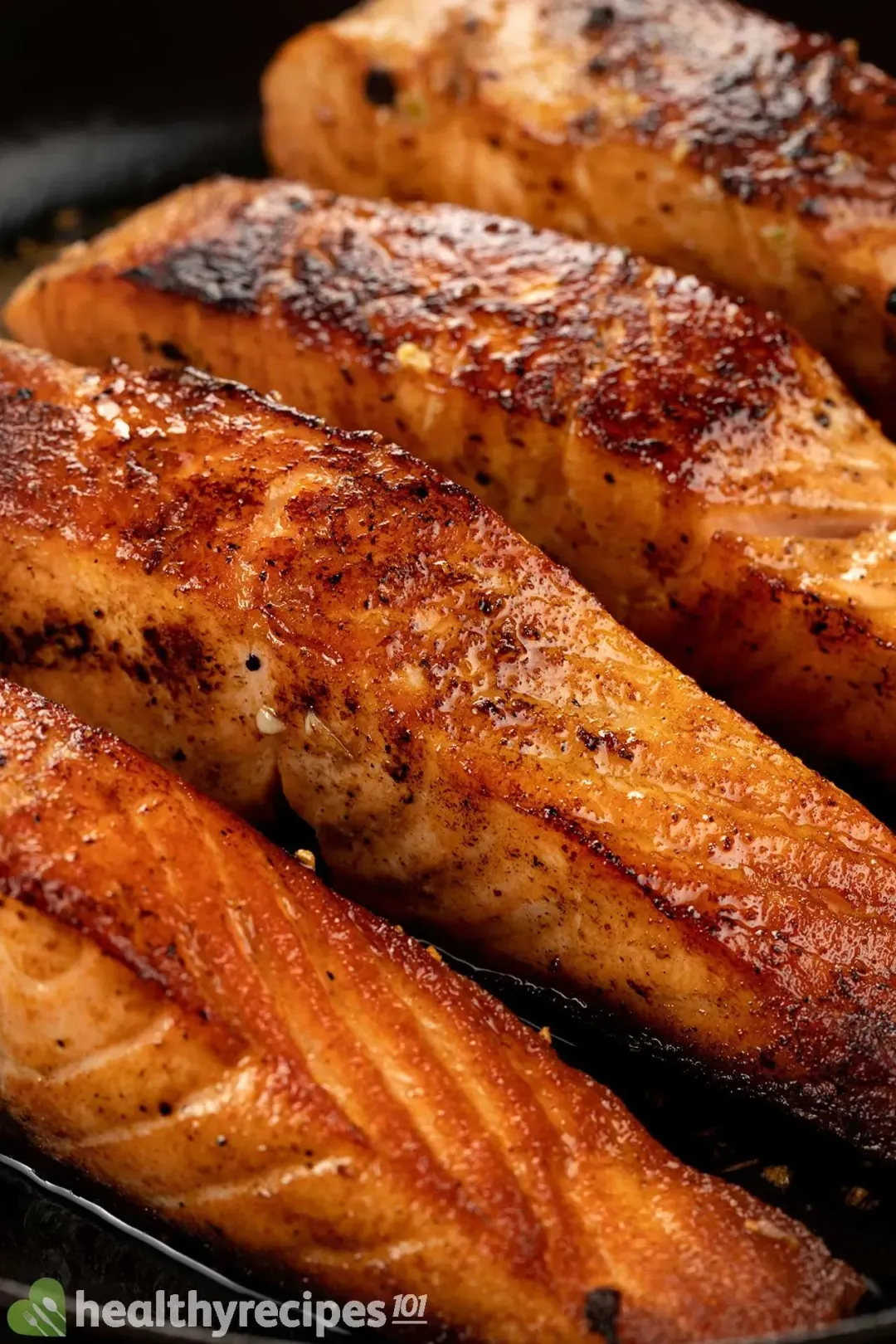
1 of 6
Pan Seared Salmon Recipe
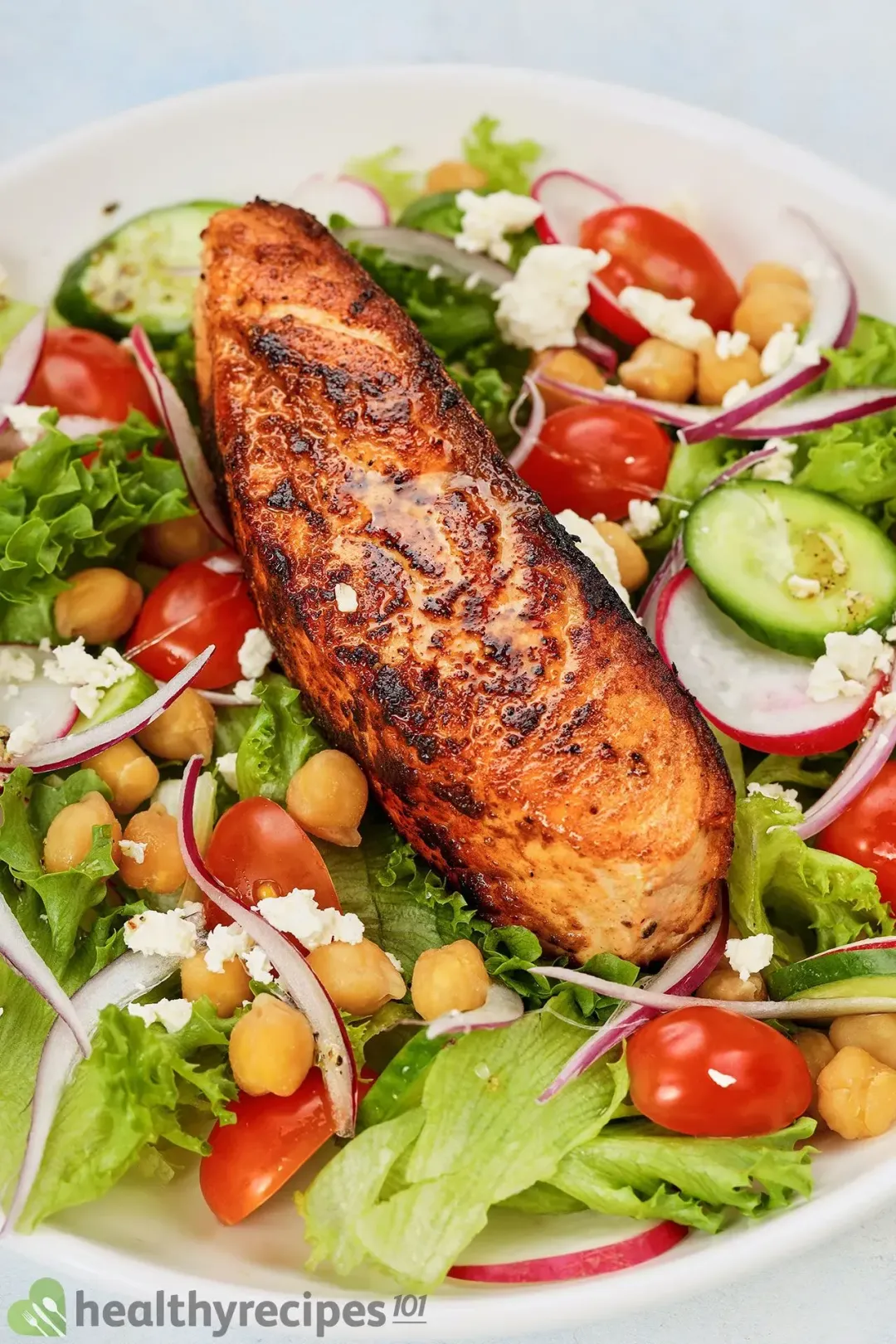
1 of 6
Salmon Salad Recipe
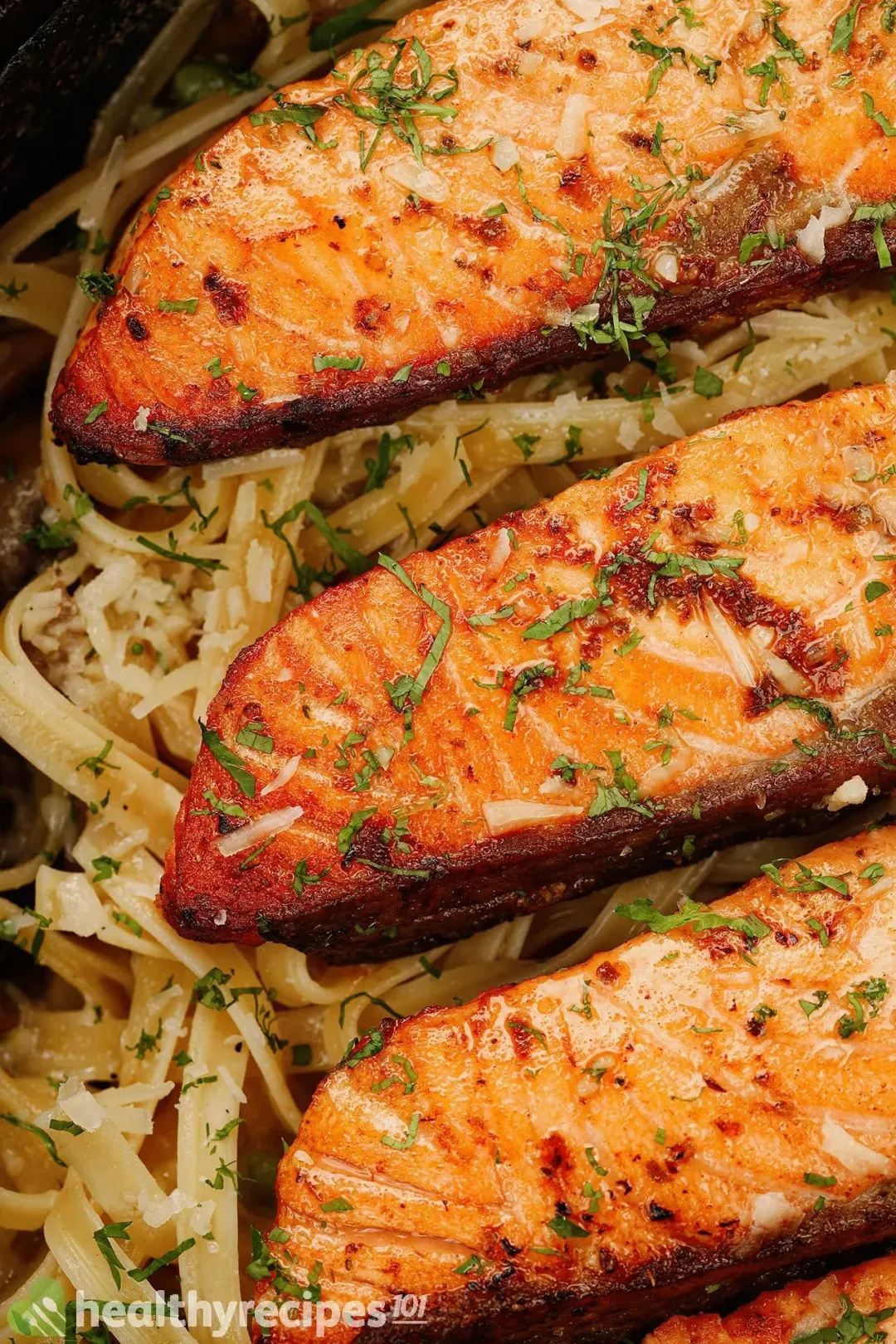
1 of 6
Salmon Alfredo Recipe
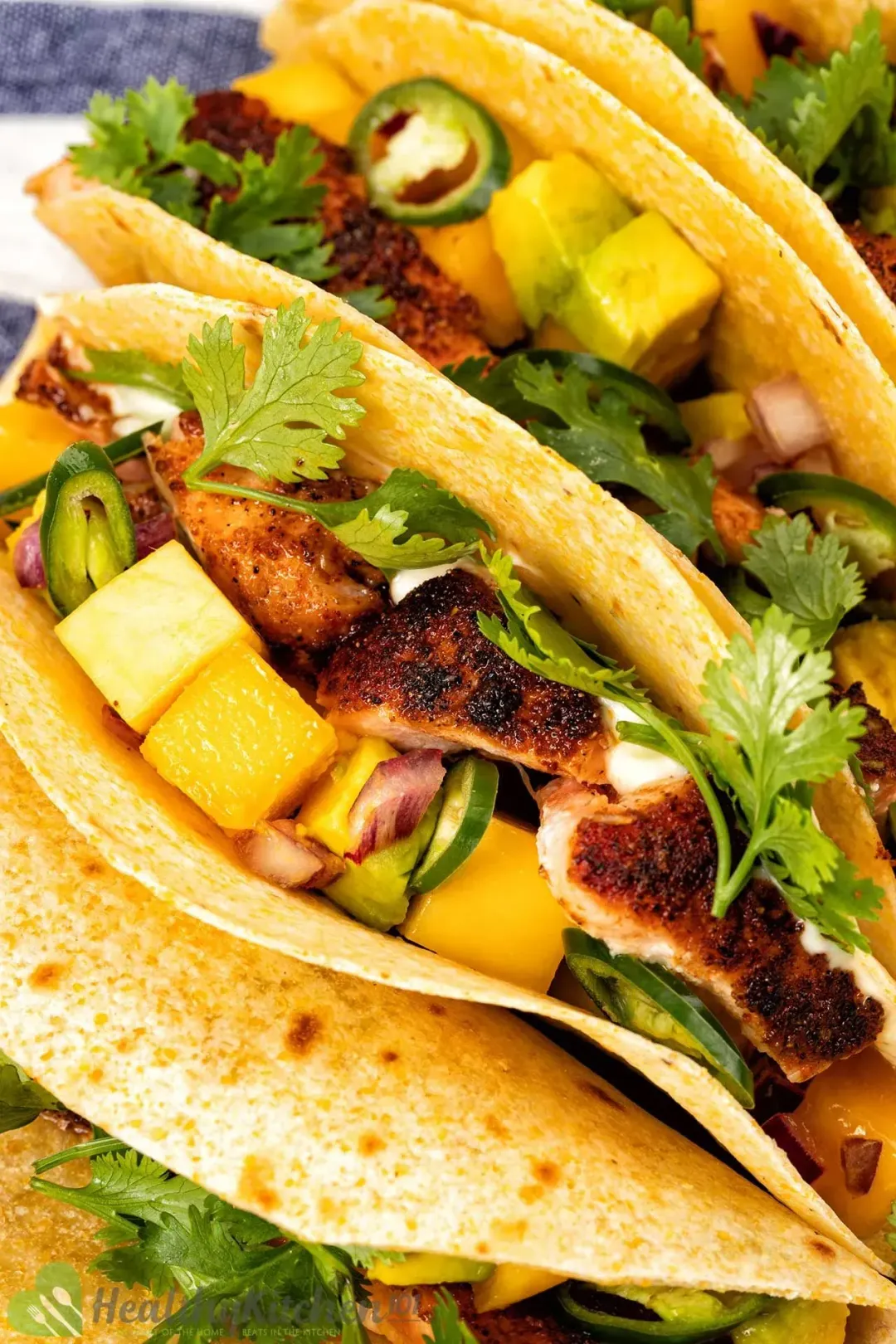
1 of 6
Blackened Salmon Tacos Recipe
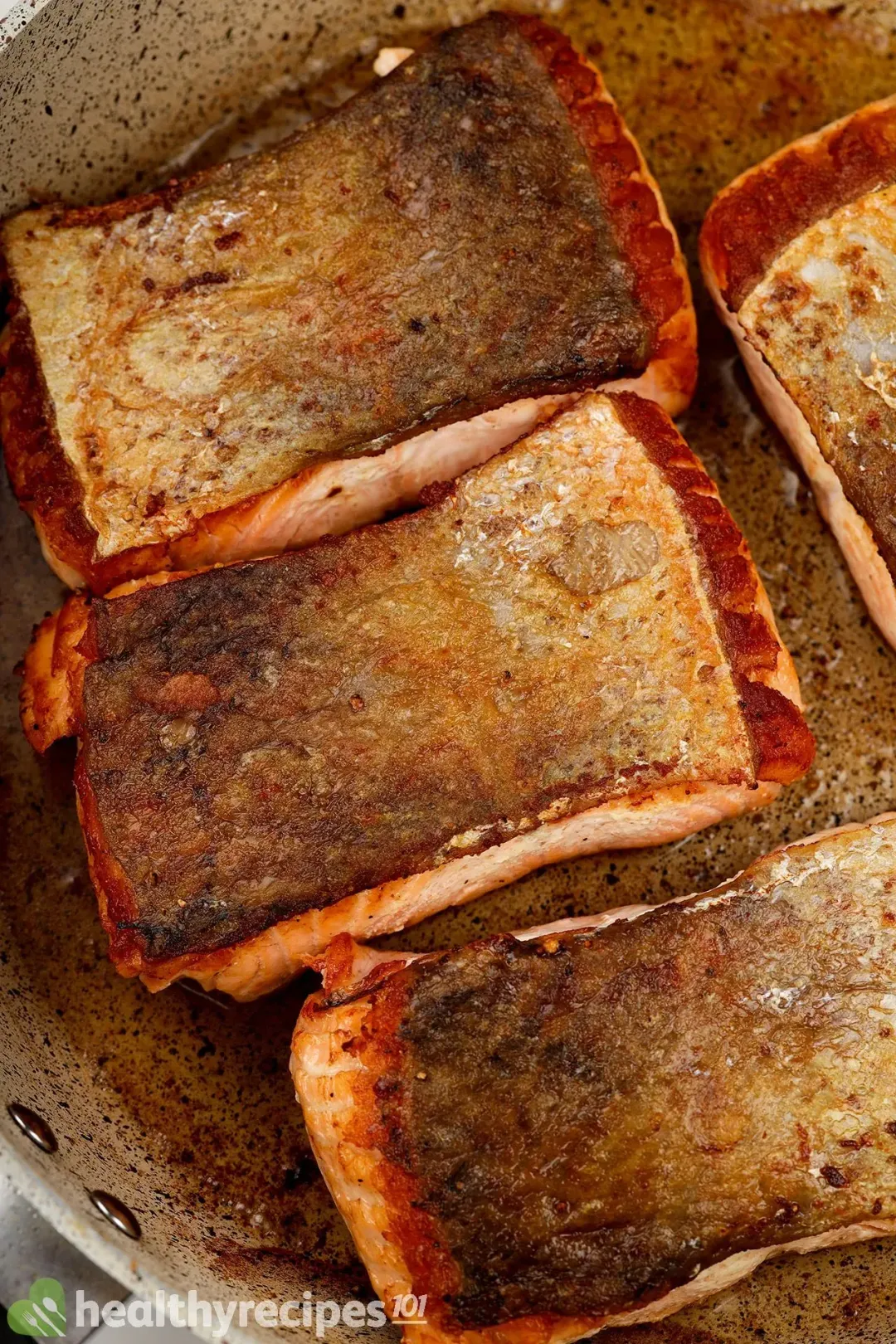
1 of 6
Crispy-Skin Salmon Recipe
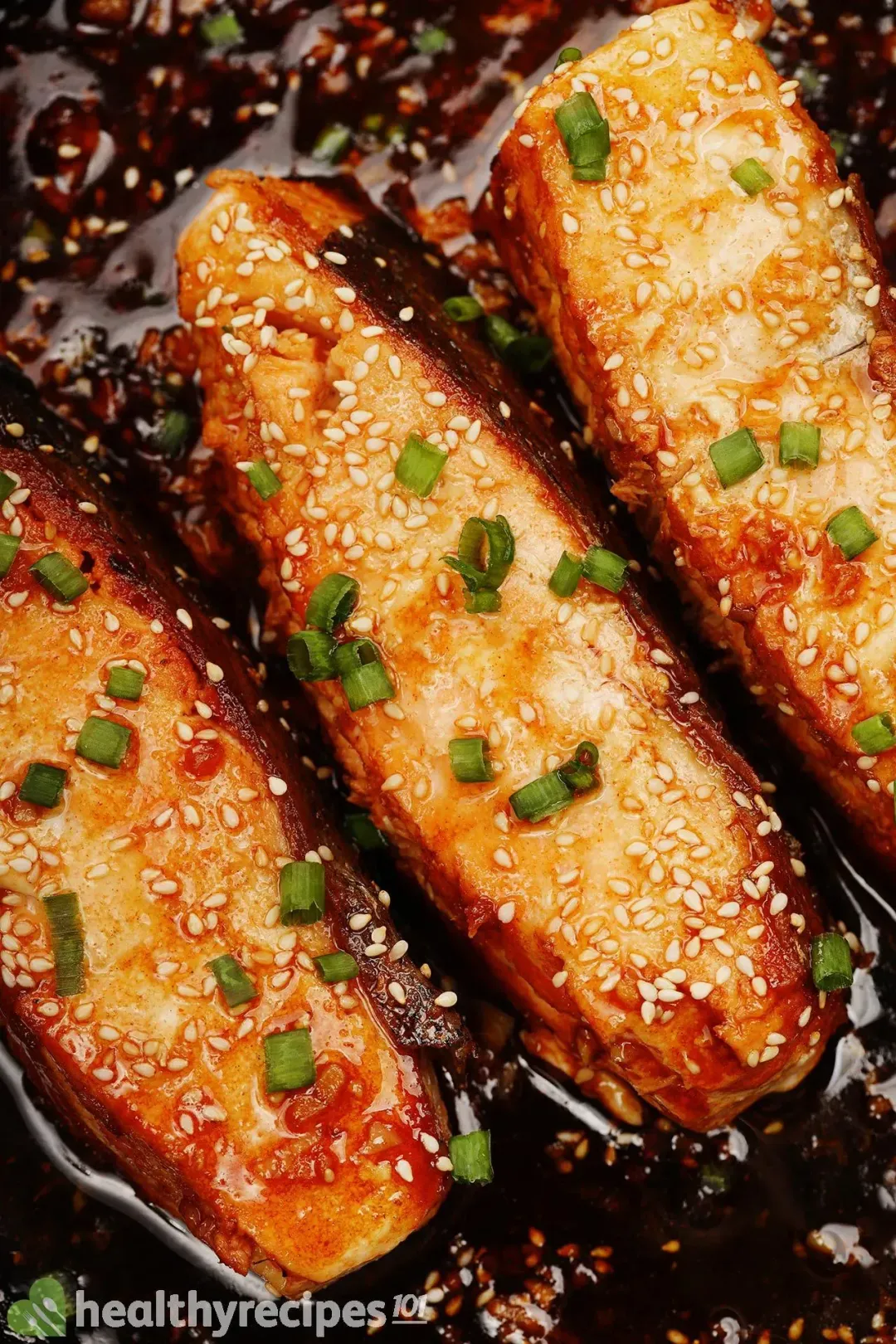
1 of 6
Honey Soy Salmon Recipe
How to Make
Pan-searing most often uses oil in small amounts. The type of oil you use can make a difference in terms of health benefits.
Olive oil is the most popular choice. It is the least processed type and comes with multiple health benefits, including containing antioxidants. Depending on the size of your skillet, 1 or 2 tbsp of oil is enough for searing.
Watching the oil temperature and keeping it clean by filtering it frequently are two other things you can do to ensure the healthiness of your dish.
How to Sear
- Preheat the pan to medium-high and add oil.
- Season the salmon.
- When oil starts to smoke, add the salmon in, skin side down to start.
- Sear for 30 seconds, and then you have two options:
- Lower the heat of the stove to medium-low for 4-6 minutes.
- Move the pan to a preheated oven at 450°F for 8-10 minutes.
- Turn off the heat, or remove the pan from the oven. Flip the salmon and let the residual heat work to finish the job for 60-90 seconds.
Tips for Searing
- Keep the skin on
The skin is one of the best things about salmon. It is crispy in texture and rich in omega-3 fatty acids. It also helps with moisture retention.
- Start with the skin-side down
The skin protects the flesh from the high heat. In addition, the flesh will absorb the fat from the skin, making your salmon more flavorful. The skin side also helps you flip the fish easier with a spatula.
- Know when salmon is done
The color of the fish is a good indication. Perfectly cooked salmon will be an opaque pinkish color on the outside and translucent pink in the middle.
Checking the texture also works. If the flesh is flaky and tender, your salmon is done.
Or you can check the temperature to be sure. According to the USDA, if it’s around 145 °F, the flesh is cooked perfectly (and safe to consume).
Turn off the heat and enjoy some smoky and delicious salmon!
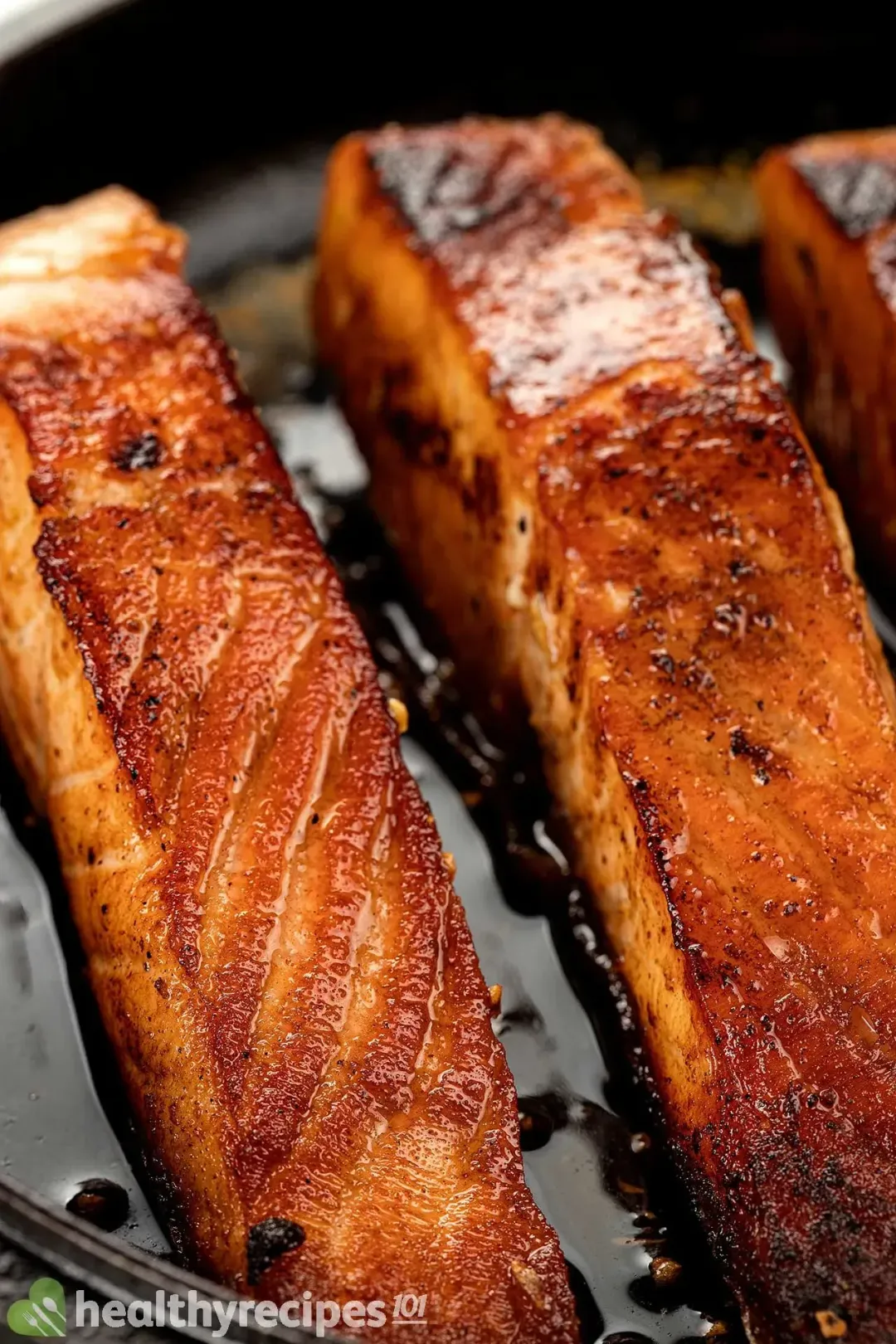
Pan Seared Salmon Recipes
If you’re looking for a quick, easy, and flavorful salmon dish, give these pan-seared salmon recipes a try!
Ingredients
Directions
- Choose a recipe that you like.
- Gather the ingredients.
- Follow the instructions to give you incredibly tasty pan-seared salmon in less than 35 minutes!
Luna Regina
Writer, Author
